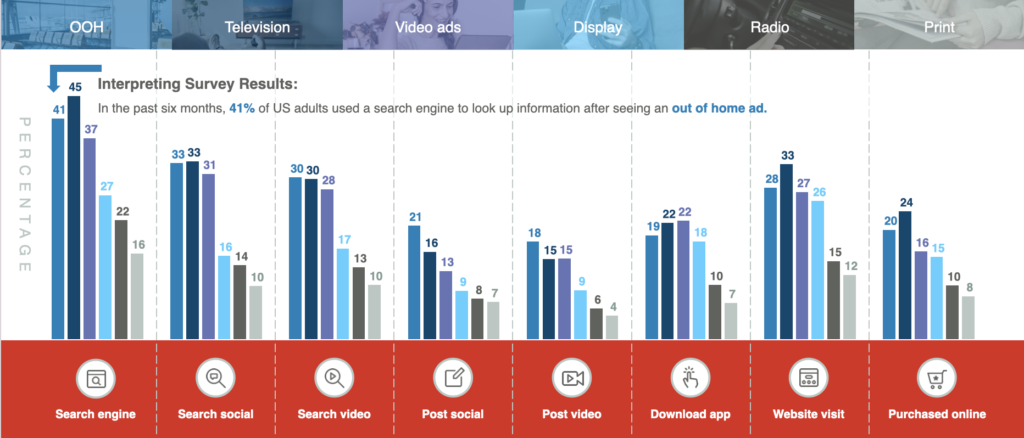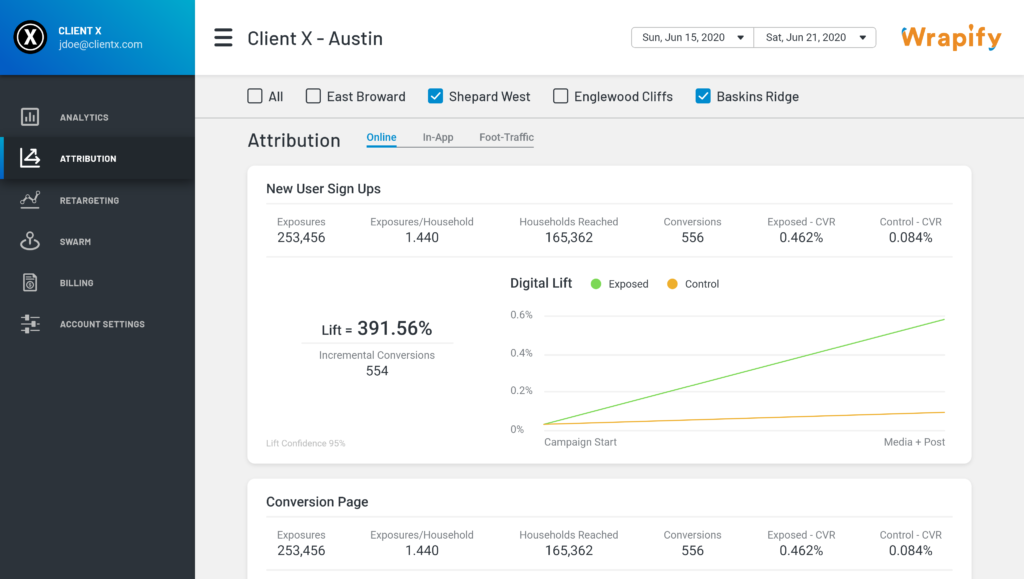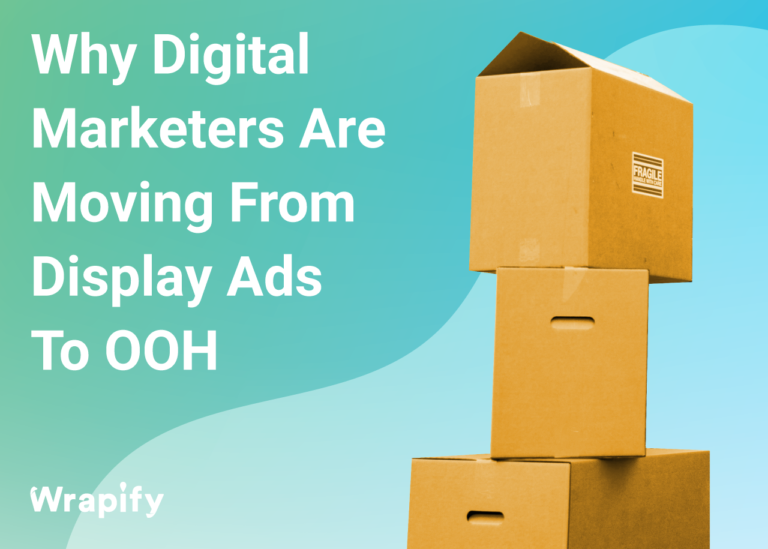More and more marketers are testing out-of-home (OOH) placements as an alternative channel to digital mediums. Nowadays, the classically-recognized top-of-the-funnel advertising platform not only helps boost brand awareness. These ads are now driving real results, similar to the beginning of the digital marketing era.
In this article, we’ll refer to four main reasons why this ad platform is making a significant comeback, and how marketers today – digital, performance, and brand – can all benefit from it.
1. It works.
Yes, that’s technically a full sentence. But let’s back it up with facts and figures! Before the pandemic, and even more today, the OOH industry has proven the effectiveness of the ad medium. A recent report commissioned by the OAAA measured consumer’s online actions taken after being exposed to six different advertising platforms – OOH, TV, Video, Radio, Display, and Print. The results painted some interesting comparisons between how different platforms are used, and what results they can drive.
For example, when it comes to driving search results, marketers may think that Video or TV would be the most impactful medium by far. However, 41% of US adults reported using a search engine to look up information after seeing an OOH ad.

Additionally, many digital marketers are under the impression that to drive conversions (app downloads, website visits, online purchases) this must be done with display ads. But OOH and TV advertising outperformed display on each conversion tactic in the study.
OOH also made a stand-out performance, coming in as the #1 platform in driving social and video posts. Which makes sense, because consumers are not going to take screenshots of display ads on their phones and repost them, but they will stop to take a picture of clever brand advertisements while they are out living life.
2. Digital ad performance is declining.
With an influx of companies shifting to online marketing during the pandemic, increased competition created higher digital ad costs for demand gen marketers. According to a recent survey, 77% of marketers agree that increased online focus during the pandemic made SEO competition tougher. A majority also indicate that having to compete with massive brands for search positions resulted in declining returns for digital ads.
In addition to search display, social media costs increased for marketers as well. Onescreen.ai’s Chief Revenue Officer explained that Facebook (Meta) and Google campaign costs increased significantly during the 2021 holiday season. Which also meant that consumers were inundated with digital advertising. A majority of marketers from the same survey believe that poor performance in digital advertising is a direct result of consumer’s digital fatigue and general distrust of digital ads.
On top of all that, there is another huge risk in the world of digital media. In 2022, digital ad fraud in North America is estimated to account for $23B in wasted marketing dollars. Which is more than double the size of the total US OOH ad spend. Let that sink in…
3. The US is getting back to normal.
It would be wrong to say that the pandemic didn’t also impact the out-of-home advertising industry. During peak lockdown, travel on the road, on subways, or in stores was at a near standstill. Therefore, the typical OOH advertising mediums simply were not meeting marketer’s needs.
According to the monthly mobility reports provided by Geopath and Motionworks, consumer movement is starting to pick back up. In their latest report, the percentage of people leaving their homes on an average day in April is above that of March 2021 – up to 88% of the US population.

Now that things are opening up and people are going back to work, out-of-home is experiencing a resurgence, which resulted in OOH spending increasing 72% in the first quarter of 2022. It wasn’t just an overall increase in marketing budgets post-pandemic, but also a result of marketers seeking new channels to reach their goals. Brands like Sunday Scaries and BelliWelli became just two of the many brands to devote upwards of 20% of the marketing budget on OOH media buys (average spend is still 4% across all industries).
4. BONUS: It’s measurable.
While some of this information may sound familiar, something more unheard of is the measurability of OOH advertising. That’s because it’s relatively new, and still not perfected in many versions of OOH. At Wrapify, we interrupted this pattern.
Our software provides measurable statistics. It’s not just total impressions, but consumer actions, too. Using the Wrapify Attribution Suite, brands can attribute what exposure to Wrapify vehicles affects site visitation, online conversion, in-app conversion, and retail foot-traffic.

Brands using Wrapify can also use the exposed audience for retargeting. With Physical Retargeting, brands can trigger Audio, Mobile, Display, Connected TV, Native and Video advertising from exposure to Wrapify vehicles. This feature is a perfect addition to any marketing mix, activating a complete omnichannel campaign.
When you think about a successful marketing campaign, you weigh several factors. “Is it the right audience?” “Right time?” “Is it measurable?” “Will there be ROI?” All of these are important to consider. And while you may think that only certain campaign types could give you all these answers, the resurgence of OOH is here to make you think differently!
Open to talking more about it? Get in touch.
